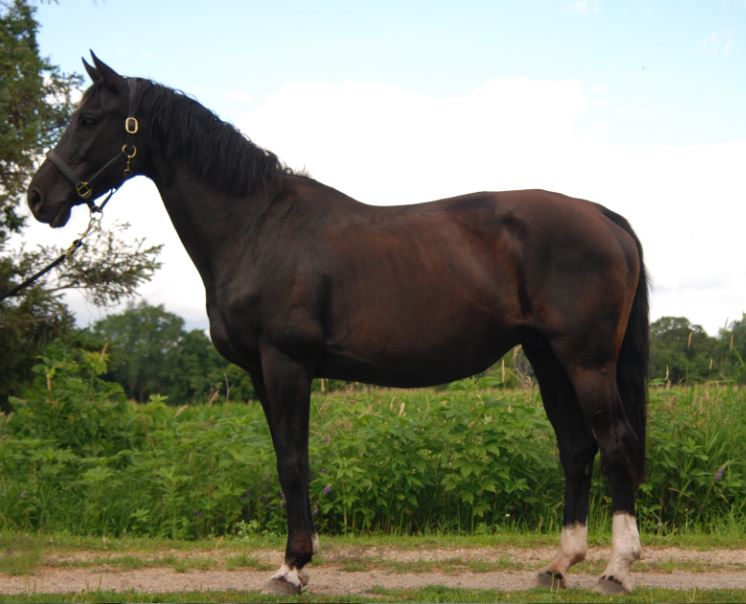Avoiding a Hay Belly
As equine nutrition experts, we have often heard ‘my horse has a hay belly, what should I do differently?’ Or,” he’s really big in the belly but he doesn’t have good muscles.” Apart from a broodmare belly, post-colic surgery effects or a parasite situation, the answer sounds like a nutritional imbalance. The good news is, once you know what a nutritional imbalanced hay belly is and what causes it, you can make adjustments in your program and avoid it in the future.
How To Identify The Problem
Have you ever seen a young or growing horse with a big belly while the rest of their body looks small? Or a mature horse that has a midsection that hangs low, while ribs are visible and muscles along the back and hindquarter are hard to find? How about the ‘pregnant gelding’ situation? All of these are describing a hay belly. On a regular basis, you should conduct a body condition score on your horse to check for muscle mass as well as appropriate fat deposition in key areas. It’s important to check all areas indicated, since a rib or belly check alone doesn’t provide all the information.

Willow has had 4 foals, and as a result, tends to show characteristics of a hay belly.
Causes of Hay Belly
When too many low-value calories are consumed without adequate protein (including essential amino acids), the body stores the calories as energy in cells yet the needed protein isn’t available to maintain muscle mass. In the absence of adequate protein, muscles atrophy while stored energy increases. Over time, a hay belly emerges as muscle mass over the top is lost and gut size may expand.
The biggest factor is overfeeding fiber high in Neutral Detergent Fiber (NDF) while under feeding adequate levels of quality protein. NDF is a measurement of cell wall content in plants such as grasses. As the plant matures, it builds up stronger cell walls so that it may hold itself upright. The stronger these walls, the less digestible these cells are for a horse. So when fed very mature hay, your horse is less able to digest that hay, as compared to hay with a lower NDF value (less mature). In addition to being higher in NDF, the grasses also tend to be lower in the quality proteins; important nutrients for developing and maintaining muscles.
How To Prevent Hay Belly
First, feed the best quality hay that you can find in the correct amount for your horse’s body weight, age and activity level. The hay that is smooth and ‘leafy’ tends to have levels of NDF that are better for the horse to digest. Hay that is pointy to the touch or looks like it’s a green version of straw should be avoided as it simply offers little nutritional value for the horse.
How To Get Rid Of A Hay Belly If My Horse Has One?
First, check the quality and quantity of hay your horse is eating. If the quality is adequate, then it’s time to reevaluate the quantity fed. A horse should be fed 1.0-1.75 pounds/100 pounds of body weight of hay per day. Not a fan of math? Yea, me neither. Here’s a quick answer: for a horse weighing 1,000 pounds, that would be between 10-17.5 pounds of hay each day, ideally divided into 2 or even 3 feedings. Check to be sure you’re not inadvertently overfeeding, or underfeeding if your horse is actually bigger than 1,000 lbs. Learn to estimate your horse’s weight accurately here.
The last piece of the puzzle is feed. Make sure that the concentrate you provide is offering adequate quality protein. Total protein alone can’t support or develop ideal muscles. The right balance of amino acids is needed to build and maintain muscle quantity and quality. Look for feeds that guarantee levels of Lysine, Methionine and Threonine. These three key amino acids are the most important for your horse. And lastly, check to be sure you’re feeding the appropriate amount of concentrate. Feeding a balanced diet and adding some exercise to help develop muscle mass and tighten up that tummy is a great way to reclaim that belly!
The feed room is proudly brought to you by Nutrena and Cargill Animal Nutrition. Learn more about us here. You can see the original blog post here.
